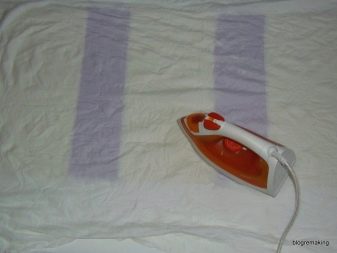All about corrugated fabric
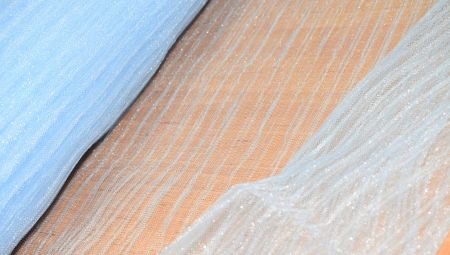
In late Soviet times, having a pleated skirt meant being in a fashionable theme. However, several decades have passed, and such a thing would be appropriate in the wardrobe of a modern woman of fashion. But not everyone decides to buy a corrugated thing, considering that it is very impractical. It is worth figuring out what kind of fabric it is, and whether it is true that such problems will arise with it.
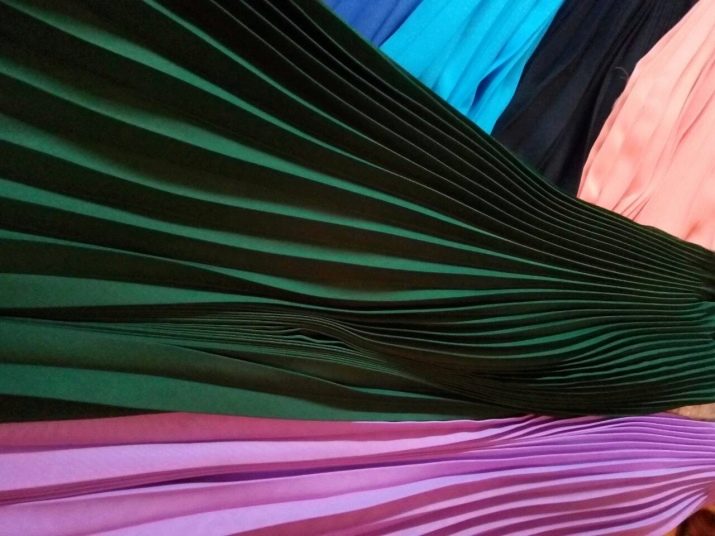
What it is?
Ripple is a fabric in a small vertical fold, which is laid "on the edge". This helps the material to look not only voluminous, but also flowing. By the way, you can corrugate different canvases, and even with your own hands. The fabrics themselves in texture are both smooth and grainy, both fleecy and translucent. They are used to sew clothes and make home textiles - curtains, for example.
By the way, they often confuse pleats and pleats. Yes, these are different types of fabrics. And they differ in the way they form folds. If it is a corrugation, then the fold is placed "on the edge", and it is located at an angle. It is possible that towards the bottom of the thing the folds will become wider, somewhat reminiscent of a fan. Pleated seams are always clear, even folds. When pleating, the fold and fold are of equal width, and in pleating, the fold is always wider than the fold.
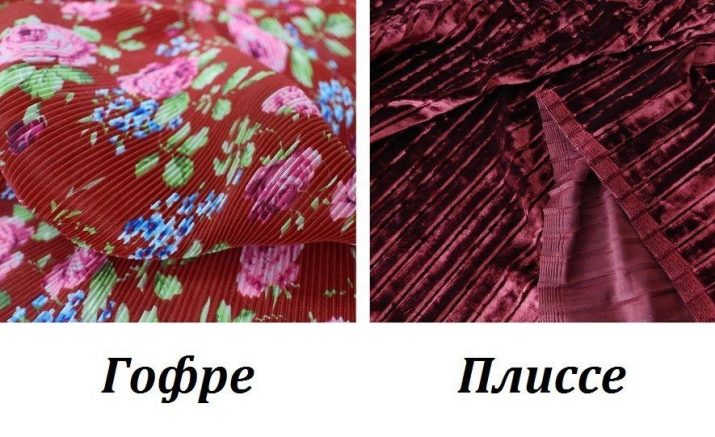
Corrugated fabric is made on special press-type machines. The folds are laid either in parallel or in a fan-like manner. Lightweight types lend themselves better to shirring. Both synthetics and natural materials crimp well. From silk, linen and mixed fabrics to polyester and viscose, almost all popular fabrics can be shirred.
What are the main advantages of corrugated fabric:
-
if you choose the right style, the fold in the structure of the fabric will slim;
-
you can lay folds in different ways, which means that the design solution has a place to roam;
-
natural corrugated fabrics have virtually impeccable hygienic properties;
-
and if it is synthetics, then it will not wrinkle.
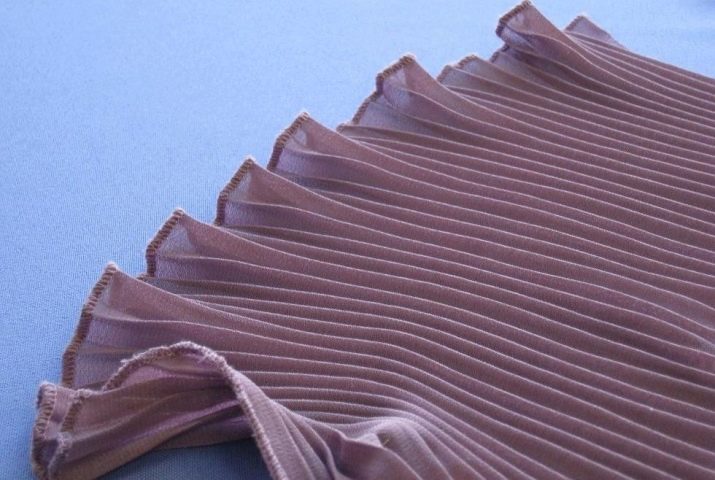
There is one drawback, one might say. For the fabric, indeed, not easy to care for.
Application
Basically, clothes are made from corrugation, but even bedding can be made from this fabric. In the latter case, the fabric will have a micromassage effect. And there are options here.
What is the weave corrugation.
-
Velvet - this is a fleecy medium-density fabric with good retention of folds; it is used for making items of ladies' wardrobe.
-
Chiffon - a flowing and translucent fabric made of silk, viscose or cotton. Skirts, blouses, dresses, certainly light - that's what chiffon goes for.
-
Net - a very textured material, which is usually made from polyester. She makes bright stage costumes and more. It can be used to trim clothes and accessories.
-
Atlas - this is the name of the fabric with glitter. Satin is woven from polyester, also viscose and, again, silk. Suitable for everyday wear and evening wear.
-
Crepe satin - a grainy canvas with a certain sheen. It is made from raw silk, and usually it only goes for women's clothes.
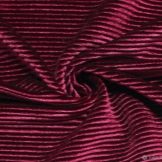

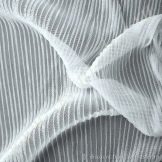
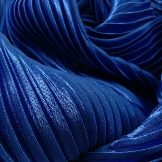
And even blinds can be made of corrugation. This is usually done with synthetic materials, in some cases blended. Children's clothing is also often made from corrugation, especially outfits for school girls.
Care
It has already been noted that the fabric is capricious. And if it is silk or chiffon, there is no need to suffer, it is better to immediately dry-clean the fabric. If it is a blended or synthetic item, it can also be sent to the house wash.
But there are some pretty strict rules here:
-
do not heat water above 30 degrees;
-
before washing, it is better to hem the folds with white threads (yes, it is troublesome, but reliable), and fasten them in the center and along the bottom of the thing, only the stitches do not need to be made tight;
-
if you wash, then only with the use of soft powders, you can add a delicate washing conditioner;
-
washing in a typewriter assumes the option "hand wash" or "delicate", "silk", spin should be excluded;
-
dry clothes or other corrugated products on a hanger;
-
do not allow the product to dry out.
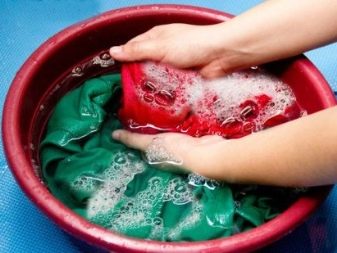
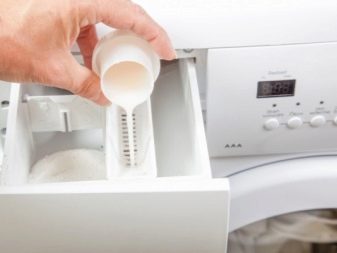
There is absolutely no need to iron the fabric if it is properly dried. But if the folds look untidy after washing, then something went wrong. If it is chiffon pleated fabric, it steams very well. For example, a full bathtub of hot water is being drawn, and the item is hanging on a hanger directly above the bathtub. Close the door for 15 minutes. If you have a steamer, you don’t need such trouble: the item hangs on a hanger, and the device is passed over it. But there are fabrics that can neither be ironed nor steamed, and this will always be indicated on the tag.
Let's say the corrugated product is crumpled so much that ironing is indispensable. Then you need to use a three-layer wet gauze. Well, heat the iron according to the instructions on the product label. And even if the folds were not hemmed before washing (and therefore may wrinkle), this will have to be done before ironing. Ironing must be done exclusively from the wrong side, and the lining is ironed separately from the corrugated layer.


How to make corrugated fabric at home?
At home, corrugating material is not an easy undertaking. It's really easier to buy. But if you really want to, you can try. You need to take cardboard forms, lay out a canvas between them, which must be soaked in water with vinegar before that. And after being in this solution, the fabric should be steamed and dried.
Several important recommendations:
-
find forms - flared and poluklesh, curly ones are especially in demand now;
-
it is better to send the workpiece to the vinegar bath, and so you can capture several products at once for one procedure;
-
it is convenient to make shaped sheets from dense Whatman paper, one shape - for fun - enough for several dozen skirts;
-
corrugate fabric, and not a product, that is, first they made folds, and then they sewed;
-
mortar proportions - 1 part vinegar to 3 parts water, it is good if it is settled water;
-
better open windowsbecause the smell of the house will be pungent;
-
fabric for corrugated and ordinary things has a different consumption, to make a corrugation, you need 3 times more fabric.

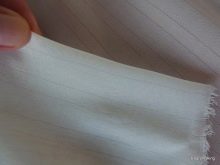



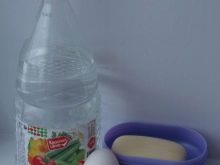
Beauty doesn’t always require sacrifice, but it often does take trouble. And the folds of such a fabric are a vivid example of this. But beautiful!
